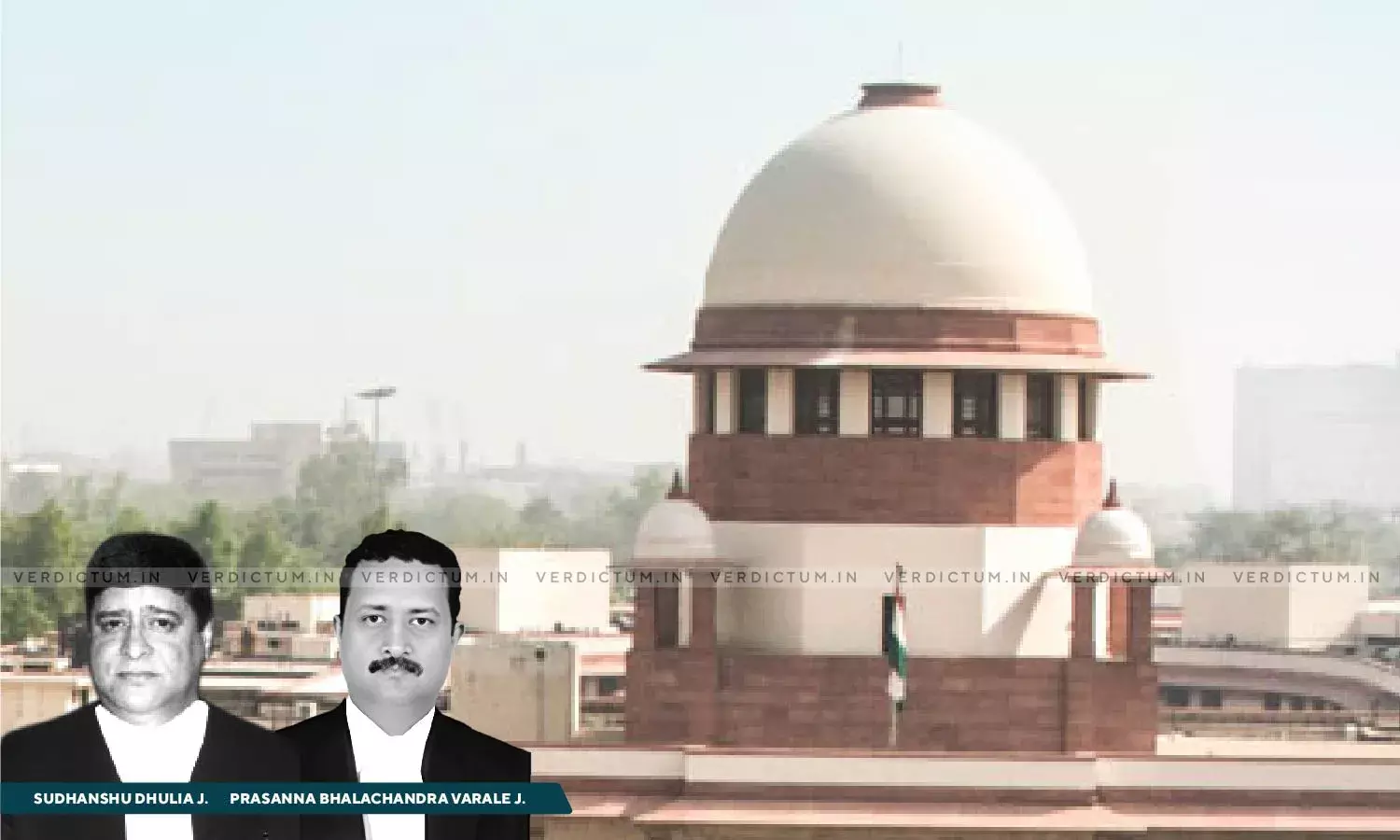“Falsus In Uno, Falsus In Omnibus” Principle Doesn’t Apply To Indian Criminal Jurisprudence: Supreme Court

The Supreme Court observed that the principle of “falsus in uno, falsus in omnibus” i.e., “false in one thing, false in everything” does not apply to the Indian criminal jurisprudence while upholding the murder conviction of some persons in 2002 case.
The Court observed thus in a Criminal Appeal preferred against the Judgment of the Kerala High Court by which some accused persons were acquitted while others were convicted.
The two-Judge Bench of Justice Sudhanshu Dhulia and Justice Prasanna B. Varale remarked, “The entire submissions of the appellants were that since there are contradictions, the entire story of the prosecution is false. As we have already mentioned above, the principle of ‘falsus in uno, falsus in omnibus’ does not apply to the Indian criminal jurisprudence and only because there are some contradictions which in the opinion of this Court are not even that material, the entire story of the prosecution cannot be discarded as false.”
The Bench added that it is the duty of the Court to separate the grain from the chaff and it is also open to the Court to differentiate the accused who had been acquitted from those who were convicted where there are a number of accused persons.
AOR C. K. Sasi and Advocate Meena K Poulose represented the Respondent/State.
Brief Facts -
In 2002, Rashtriya Swayam Sevak Sangh/Vishva Hindu Parishad (RSS/VHP) had called for a hartal (strike). This led to clashes between the members of the Communist Party of India (M) (CPI (M)) and RSS. A group of 11 persons, afraid of the mob allegedly led by CPI(M), hid, and stayed near a shed situated near a river. At midnight, they saw 11 persons coming from the eastern side and 5 persons coming from the northern side carrying deadly weapons like, axe, dagger, and chopper. All the 11 but for the 2 deceased persons were alerted and rushed towards the river to save themselves. The two deceased persons were asleep and thus, the mob allegedly inflicted fatal injuries on them.
Resultantly, an FIR was registered under Sections 43, 147, 148, 341, 506(ii), 307, 302 read with 149 of the Indian Penal Code (IPC) and Sections 3 and 5 of the Explosive Substances Act, 1908 (ESA). Subsequently, the accused persons were arrested and recovery of the axe used in the murder was made from the bushes near the spot of occurrence. Thereafter, other accused persons were also arrested. The Trial Court found all of the accused persons guilty but the High Court convicted A1 to A3 and A 11 & 12 while acquitted A4 to 10, A13 & A14 and confirmed the acquittal of A15. Being aggrieved, the convicted ones were before the Apex Court.
The Supreme Court in the above context of the case, reiterated, “It is a settled position that ‘falsus in uno, falsus in omnibus’ (false in one thing, false in everything) that the above principle is foreign to our criminal law jurisprudence.”
The Court noted that the principle ‘falsus in uno, falsus in omnibus’ is not a rule of evidence and if the Court inspires confidence from the rest of the testimony of such a witness, it can very well rely on such a part of the testimony and base a conviction upon it.
“In this process, it is quite natural that all the members may not find a suitable place for hiding at a particular spot or one spot. This being the situation, it was also natural and possible that Sujeesh might have rushed to another spot to hide and save himself and as such his body is found away from the dead body of another victim Sunil. The violent mob of accused persons led a deadly attack on the members of the mob and was successful in killing two members of the mob”, it further said.
The Court observed that, merely because the dead body of one was found at a place little away from the place of body of other victim, it cannot be the sole and decisive factor to discard the entire case of prosecution.
“The specific role attributed by the prosecution witnesses cannot be challenged on extraneous grounds which have been raised by the defense. There is no contradiction when it comes to assigning specific role to the above accused. Admittedly, there was an enmity between the witnesses as they were from different political groups”, it added.
The Court was of the opinion that, mere act of throwing the bomb by A3 would give rise to reasonable suspicion that he did not have the bomb in his control for a lawful object and hence, the High Court rightly upheld the conviction of A3 for Section 5 of ESA.
Accordingly, the Apex Court dismissed the Appeal and upheld the conviction.
Cause Title- Edakkandi Dineshan @ P. Dineshan & Ors. v. State of Kerala (Neutral Citation: 2025 INSC 28)


